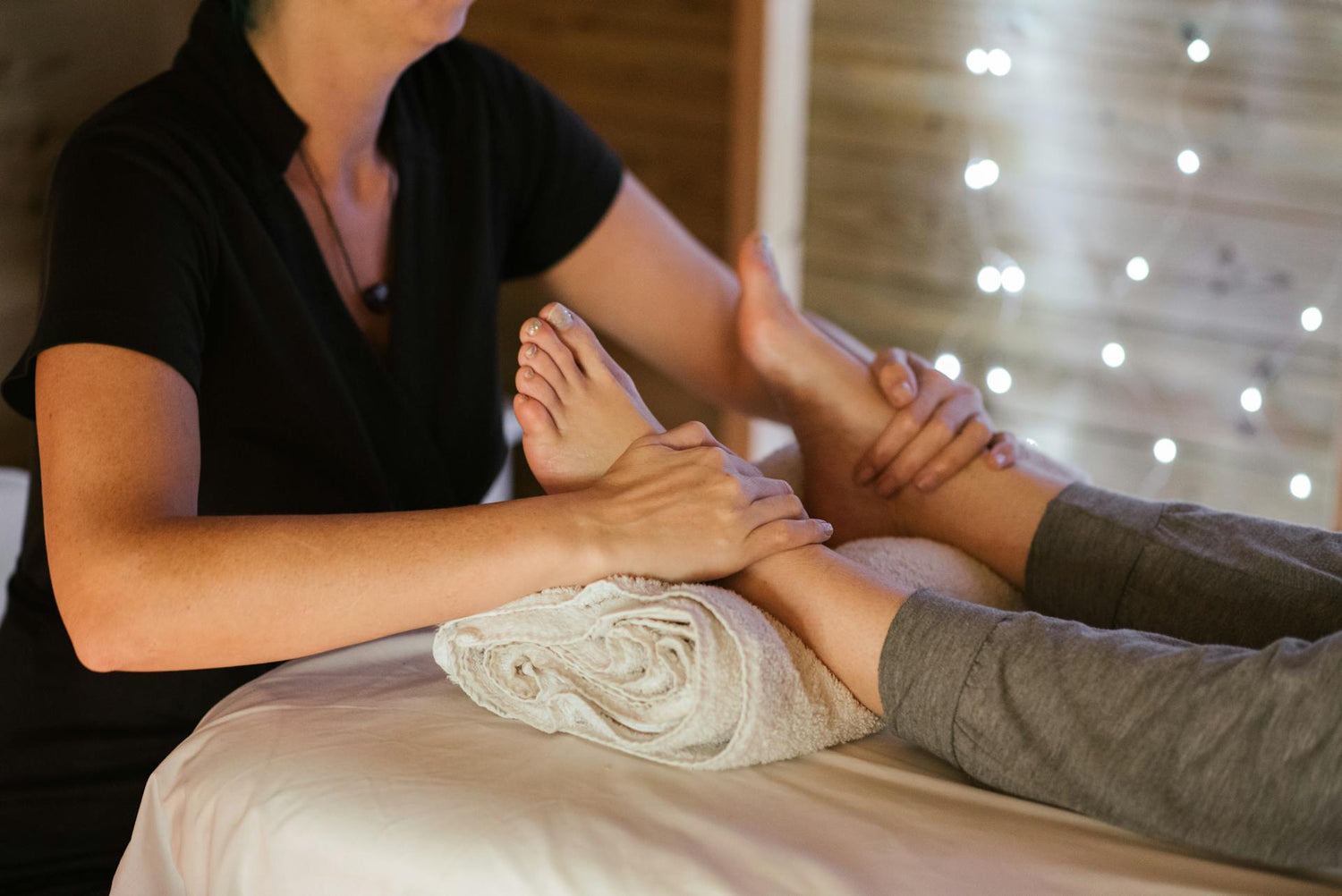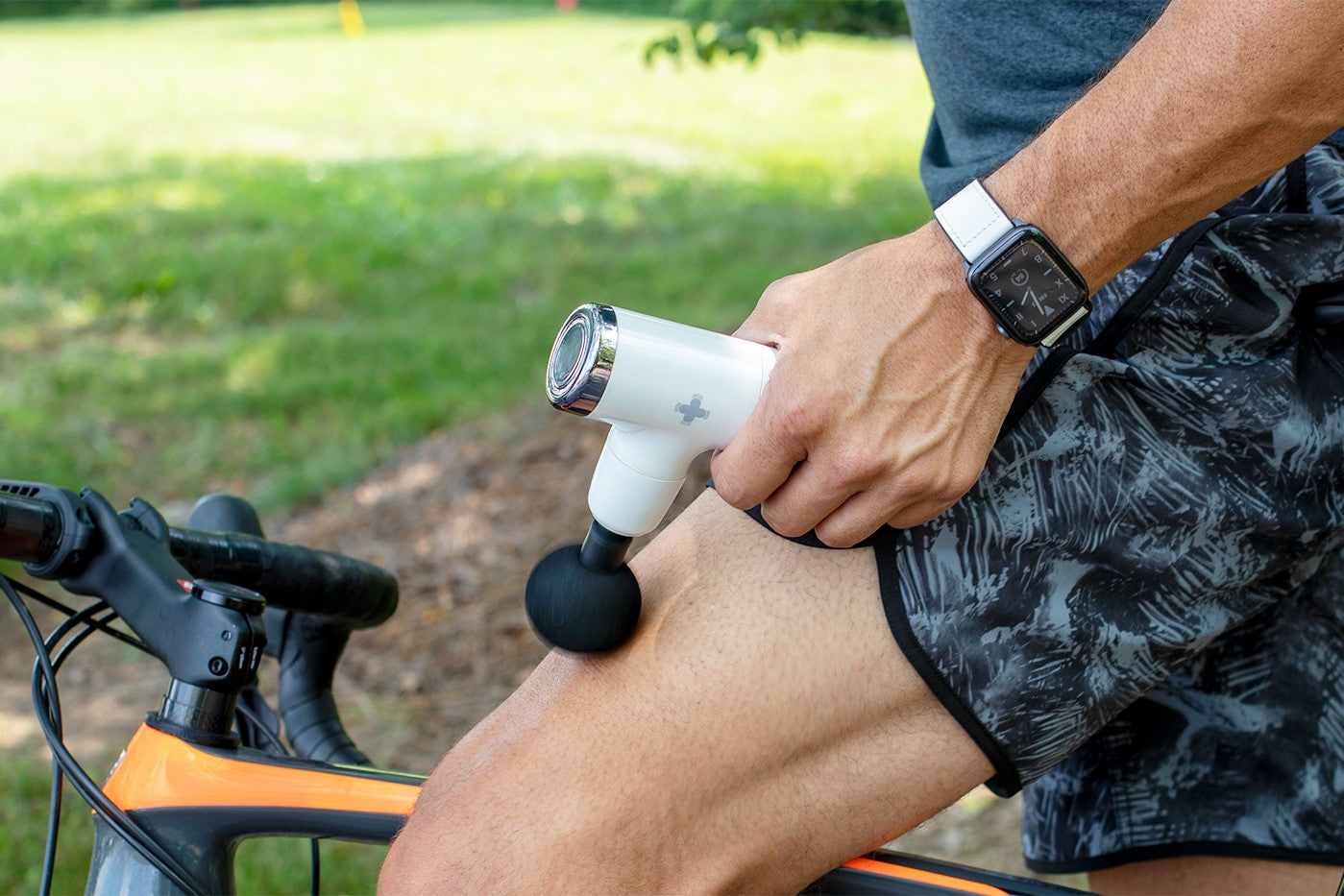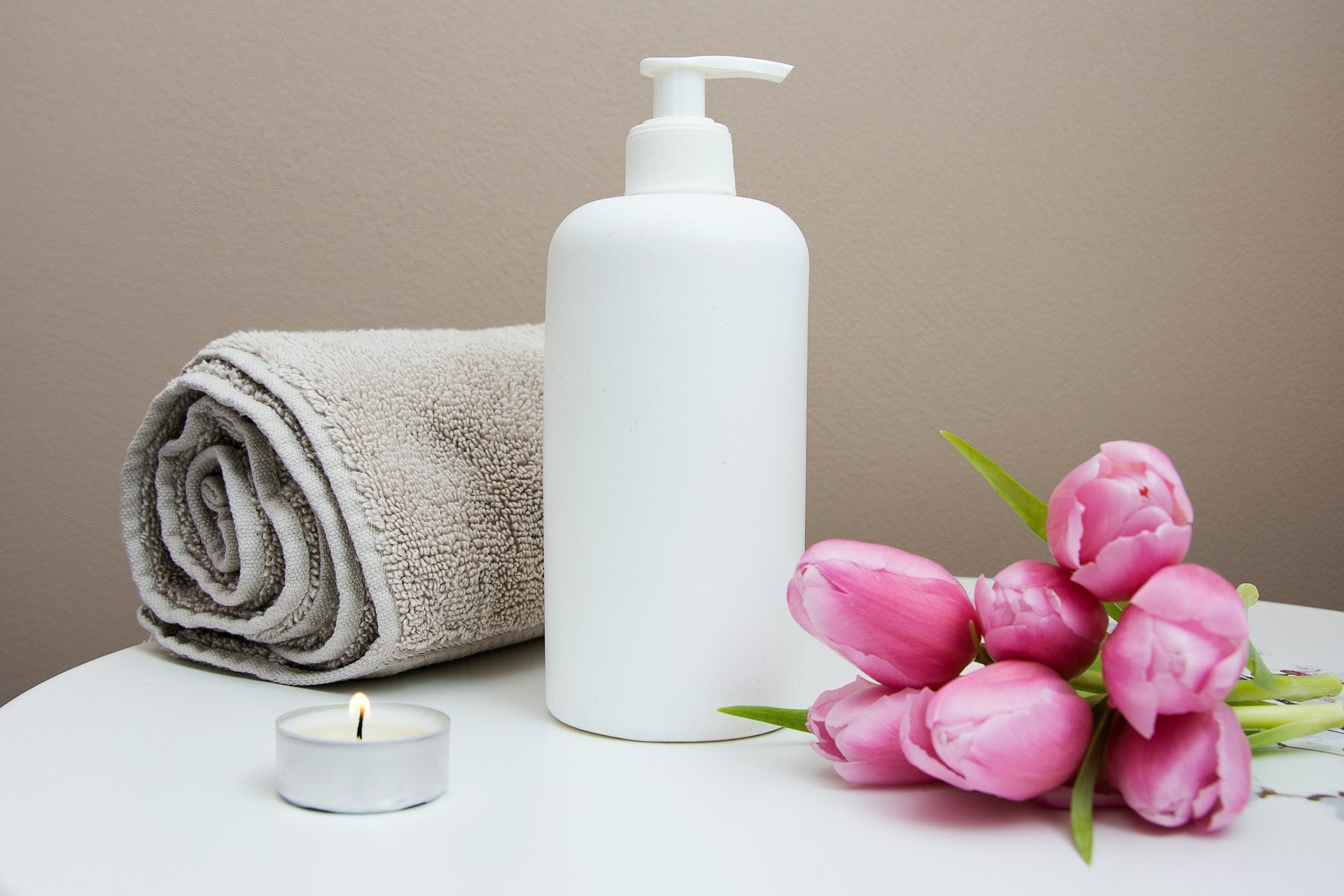When it comes to staying flexible and active, our ankles are essential. They stabilize, cushion, and absorb shock with every step we take — but unfortunately, this also makes them prone to wear and tear. And whether it’s from a sprain, overuse, or tendonitis, there are many ways these delicate joints can end up stiff and achy.
So, can massage for ankle pain help you find relief? What are the benefits, and how can you get started safely?
In this post, we’ll jump into the causes of ankle pain, how to know if massage is right for you, techniques to try, and important tips to keep in mind.
What Causes Ankle Pain and Stiffness?
Before trying massage, it’s key to identify the root cause of your ankle pain.
Usually, the culprit behind mild ankle pain is simple overuse or long days on your feet. But sometimes, your discomfort can be caused by specific (and sometimes more serious) conditions. These include:
Achilles Tendonitis
Achilles tendonitis is an overuse-related condition that often happens to athletes and other active people. For instance, you might run into this condition if you’re a jogger who recently kicked up the speed or intensity of your training sessions.
The good news is that mild tendonitis usually heals at home with the right care. And in many cases, massage can offer some relief during the recovery process.
Arthritis
Arthritis (or joint pain) often affects the hips and knees, but it can sometimes also impact the feet and ankles. If you’re wondering whether your ankle pain could be due to arthritis, this page from the Arthritis Foundation is a great resource to check out.
Sprained Ankle
If you’ve ever rolled or twisted your foot while running, you might know what it’s like to have a sprained ankle. This injury occurs when the ligaments in your ankle joint become damaged, leading to swelling, pain, and bruising.
Although sprained ankles are painful, they often heal on their own with proper self-care and rest.
Stress Fractures
Ankle stress fractures are small breaks in the ankle bones that happen as a result of high-impact, repetitive stress. They can be pretty painful, and normally worsen when you put weight on the affected leg.
Massage is not recommended for recent, acute stress fractures. Instead, healing from one of these injuries usually involves cutting back on high-impact activities and giving your ankle plenty of time to recover.
Ankle Pain and Stiffness Treatments
If you’re struggling with ankle pain and stiffness, here’s some good news: for most mild cases, you can find relief with a few small changes in your daily routine.
Typical treatment plans may include resting, icing, and over-the-counter pain meds. But in some cases (like when you have a serious injury, condition, or broken bone), you might need more in-depth care. This is when your doctor may recommend other options, including:
- Braces and splits
- Steroid injections
- Surgery
- Physical therapy
Should You Try Massage for Ankle Pain? The Remarkable Benefits
If you’re currently dealing with a sore ankle, you may have wondered whether massage is worth trying. But what are the potential benefits, and is there any research behind its effects?
Surprisingly, yes — a few studies show that massage could help improve ankle health in more ways than one. In a 2017 study, researchers examined how massage therapy could affect ankle functioning and mobility. They found that calf massage was able to boost participants’ ankle flexibility and balance.
But what about massage for ankle pain?
Depending on where your pain comes from, there’s a good chance that massage could bring you some relief.
For minor injuries that have had a few days to heal, simple massage techniques — like circular motions, gliding, and cross-fiber — can bring a boost of relaxation and stimulate healthy blood flow. Plus, a 2021 study found that foam rolling — a type of massage combined with stretching — reduced pain and increased ankle range of motion in patients with plantar fasciitis.
4 Ways to Massage for Ankle Pain and Stiffness

So, how can you try massage for ankle pain yourself?
As a first step, it’s important to consider when massage could be right for you. It’s best to check with your doctor before getting started — but as a rule of thumb, always avoid massaging injuries that are fresh or acute.
This means, for example, that you wouldn’t want to massage a sprained ankle right after you hurt it. Instead, you’d want to wait until it’s had a few days to heal. And when you do try massage, it’s key to start with light pressure and only use techniques that feel good to you.
With all this in mind, here are four ankle massage techniques for pain and stiffness relief:
1. Hands-On Ankle Self-Massage
Ankle self-massage offers a quick, convenient way to knead away stiffness and pain. It takes just a few minutes and can help release tension in many of the muscles that affect the joint.
Try these simple steps to get started:
- Sit in a comfortable chair with your feet planted on the ground.
- Lean forward to reach your ankle, and begin using both hands to gently “compress” the soft tissues around the joint. Use soft squeezing motions to massage along the lower leg for 20 to 30 seconds.
- Use circular motions to begin massaging around the round protruding bones that sit on either side of your ankle (known as the malleoli) for 30 seconds more.
- Knead your calf, starting from the middle and making your way to just above the Achilles tendon. Repeat for another 30 seconds.
- Optionally, finish with an ankle mobility exercise. Rest your ankle on your opposite knee, and hold it in place with your hand. Gently roll your foot in circular motions to strengthen and stretch the joint.
2. Oscillating Foot and Calf Massager
If you deal with ankle pain on a regular basis, an oscillating foot massager can be a great tool to try. These devices use gentle, circular motions to relieve aches and pains, and are easy to use whenever you have a few spare minutes of relaxation time.
The MedMassager Foot Massager Classic is one option that comes equipped with a flat massage surface to target tension in the feet, ankles, and calves. It uses gentle yet powerful vibration to stimulate the muscles, relieve pain, and support lower leg health.
Here’s how to try it for sore ankles:
- Sit on a couch or chair, and place the device on the floor in front of you.
- Rest your feet on the massage surface. Then, set the massager to a gentle setting.
- After a minute or so, increase the massage speed to your desired level.
- Relax and let the massager work into the feet for 3 to 5 minutes.
- Flip the device around, this time resting your calves on the surface, and allow it to massage for 5 minutes more.
- Repeat up to a few times per day.
3. Foam Rolling Calf Muscles
For many people, tight calves can take a toll on other parts of the body, such as the knees, feet, and yes — even the ankles. And if this is the case for you, foam rolling can be a powerful self-massage tool to add to your routine. Simply:
- Sit on a comfortable surface, and place the foam roller under your calf muscle.
- Use your hands and opposite leg to lift your body in the air. Then, gently begin rolling your calf over the roller at about one inch per second. If you roll over any tender spots (or knots), hold the pressure in place for 5 to 10 seconds to help release the tension.
- To deepen the massage, you can rest your opposite leg on top of the leg you’re rolling.
- Optionally, you can finish this self-massage session by turning your calf to the side as you roll. You can also target the front of the shin by rotating your body so that you’re facing the ground.
- Roll for a total of 3 to 5 minutes.
4. Massage Gun Calf Massage
If you’re someone who’s always on your feet, a massage gun can be a tool worth investing in. These devices use powerful vibrations to break up tension and pain points, and are often used by athletes to boost muscle recovery.
How can you use one for an achy ankle? In short, you’re not going to want to apply it directly on the bones or ligaments. But you can use it strategically on the calf to help relieve tension near the joint. Here’s how:
- Snap the ball attachment to your massage gun, and start it on a low setting.
- Begin to massage the upper calf muscle, slowly gliding the massage gun along the muscle fibers for a few seconds. Then, increase the pressure to your desired setting.
- To deepen the massage, flex your foot upward and downward as you massage the muscle for 30 to 60 seconds.
- Work your way down the muscle until you’re massaging just above the Achilles tendon, and glide the gun along the tissue for 30 seconds more.
Safety Tips for Ankle Massage
Before trying massage for ankle pain, here are a few safety tips to keep in mind:
- Check with a doctor if you have a history of blood clots or any symptoms of blood clotting.
- Pay attention to your body’s signals as you massage, and only stick to what feels soothing. Massage that feels outright painful may be doing more harm than good.
- Avoid putting pressure on fresh muscle tears, broken bones, or any recent, serious injuries.
- Focus on soft tissue, and try to avoid directly massaging bone.
- While you massage, watch out for any skin that’s irritated, infected, bruised, or broken.
Should You Try Professional Massage for Ankle Pain?

Depending on your situation, a visit to a masseuse may not be necessary (or practical). However, it can be a huge help for those with persistent ankle pain and/or physically demanding lifestyles.
Beyond that, professional massage can also play an important role in injury rehab. This is because a good massage therapist will have in-depth training in areas like sports therapy, pain management, and clinical massage — all of which can support healthy healing.
The bottom line? While not necessary for every ache and pain, professional massage can be a great way to treat yourself. And it may be well worthwhile if you're looking for natural ways to help manage long-term ankle issues.
Other Ankle Pain Remedies
So, aside from massage, what other options can bring some relief? When your ankle pain flares up, it may help to try:
- Applying an ice pack for 10 to 20 minutes at a time to help calm down inflammation
- Using heat to help loosen up stiff muscles
- Resting and elevating your ankles
- Trying an ankle sleeve to help add extra support and structure to the joint
How to Prevent Future Ankle Pain and Stiffness
Once your symptoms subside, here are some ways to promote ankle health, stability, and mobility in the future:
Try Stretching and Strengthening Exercises
When recovering from an ankle injury, how you take care of your ankle afterward is essential. With the right exercises, you can build strength, stability, and flexibility in these delicate joints — and in many cases, this can help lower your odds of future pain and injury.
Exercises that can help keep your ankles healthy include:
Plantar Flexion and Dorsiflexion Stretches
Plantar flexion and dorsiflexion are both fancy words for bending your foot forward and backward, respectively. By practicing these motions in a simple stretch routine, you can help your ankles stay loose and mobile.
Here’s how:
- Start by lying or sitting on the ground with your legs extended out in front of you.
- Point your toes forward, and hold for 1 to 2 seconds.
- Flex your feet to bring them back up, again holding for 1 to 2 seconds.
- Repeat for 8 to 10 reps.
Rocking Calf Raises
Rocking calf raises are another easy exercise to help strengthen and support your ankles. Simply:
- Stand with your feet about shoulder-width apart.
- Slowly raise your body up onto your toes. (If needed, you can stand next to a wall or hold onto a chair for some extra support.)
- Lower your body back down, and rock backward onto the heels with your toes now lifted off the ground.
- Repeat the rocking motion for 8 to 10 reps.
Seated Resisted Ankle Dorsiflexion
This exercise can help strengthen your shin muscle (known as the anterior tibialis), which is what allows you to flex your ankle and point your toes upward.
For this exercise, you’ll need a resistance band. Then:
- Loop the resistance band around a sturdy piece of furniture, such as the leg of a kitchen table.
- Sit on the floor and loop the other part around your foot, being careful not to do so in a way that could restrict blood flow.
- Adjust your seating position so that the resistance band is stretched.
- Place a rolled-up towel or another soft, round object under your calf for support.
- Flex your foot up towards your knee, using a slow, controlled motion. You should feel your muscles engage as your foot pulls the resistance band toward you.
- Repeat 6 to 10 times.
Find Ways to Minimize the Stress on Your Ankles
Depending on your lifestyle, there are plenty of ways to cut back on ankle strain and stress. But if you’re not sure where to start, here are some easy tips that can make a difference:
- Avoid training or running on bumpy, uneven surfaces. In addition, it might be helpful to switch over to soft surfaces, like grass, instead of hard pavement.
- Buy a pair of supportive shoes to help absorb shock as you walk, run, and move throughout the day.
- Warm up your ankles, feet, and legs before you play sports or work out.
The Takeaway on Massage for Ankle Pain
When ankle pain has caused your daily routine to come to a halt, self-massage can bring some much-needed relief. To help ease some of your discomfort, you can try:
- Foam rolling
- Oscillating massage
- A massage gun
- Hands-on massage
It’s important to note that ankle pain has a wide range of causes, with some being serious. And if your pain is severe, long-lasting, or getting worse over time, it’s best to check with your doctor before trying any new exercises or massage techniques. With their help, you can choose the best treatments and remedies for long-term recovery.
For Everyday Relief
To reap the benefits of daily oscillating massage, the tools from MedMassager can help. Pick up the MedMassager Foot Massager Classic today, or learn more about how it can support your foot and ankle health.



